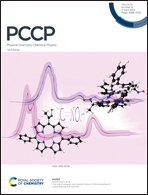Pattern-free solar absorber driven by superposed Fabry–Perot resonances
Abstract
Solar absorbers, which harvest solar irradiation in the form of heat, have promising prospects in electricity, heating, desalination, and energy storage. However, in previous work, absorbers are usually designed as nanostructures involving photolithography to obtain a superior spectral absorption performance, which inevitably increases the cost and complexity of fabrication. Here, we propose a pattern-free absorber consisting of the TiN–SiO2-based multilayer structure for effective solar energy utilization. Numerical results show that the maximum average spectral absorption of a 3-cell multilayer structure is up to 93.5% at wavelengths of 0.3–2.5 μm. The underlying physical mechanism can be explained by the coupling of superposed Fabry–Perot (FP) resonances and the intrinsic absorption of TiN, which is further confirmed via the electric field and power dissipation density distributions. The effect of the geometric parameters and materials of multilayer structures on the spectral absorption performance is investigated. Moreover, we discuss the influence of the incidence angle on solar absorbers and demonstrate that an average spectral absorption of more than 80% can be obtained even at a large incidence angle of 60°. Finally, when the number of cells in the multilayer structure is increased to 6, the average spectral absorption can reach 96%. The findings in this work will deepen the understanding of FP resonance and pave a novel path for efficient solar thermal energy utilization.



 Please wait while we load your content...
Please wait while we load your content...